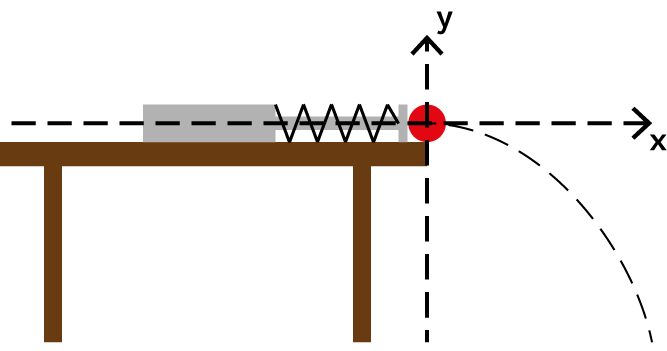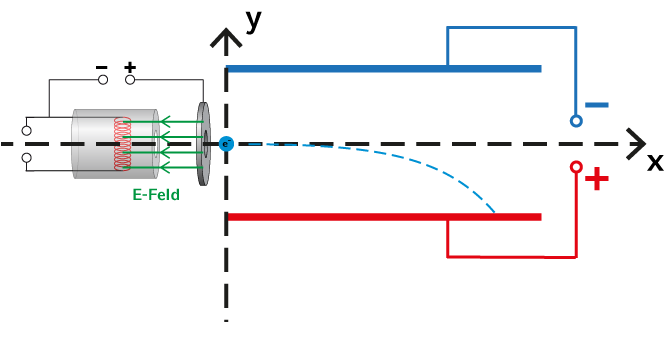To describe the trajectory in only one equation we have to solve the equitaion of the motion in x-direction$$\begin{equation}x(t)= v_0\cdot t\end{equation}$$
for t and plug in the equation of the motion in y-direction
$$\begin{equation}y(t)=\frac{1}{2}a_y\cdot t^2\end{equation}$$
This yields the searched equation:
$$\begin{equation}y(x)= \frac{1}{2}\cdot a_y \cdot \frac{x^2}{{v_0}^2}.\end{equation}$$
If plugging g for the acceleration in y-direction, it shows
$$\begin{equation}y(x)= -\frac{1}{2}\cdot g \cdot \frac{x^2}{{v_0}^2}.\end{equation}$$
With the equation for $v_0$ determined
here, it yields$$\begin{equation}y(x)= -\frac{1}{2}\cdot \frac{g\cdot m}{D\cdot s^2}\cdot x^2.\end{equation}$$
$v_0=$ initial speed in x-direction,
$g=$ gravitational acceleration,
$D=$ Stiffness of the spring,
$s=$ Extension,
$m=$ Mass of the sphere
 Hypotheses
Experiment
Hypotheses
Experiment

